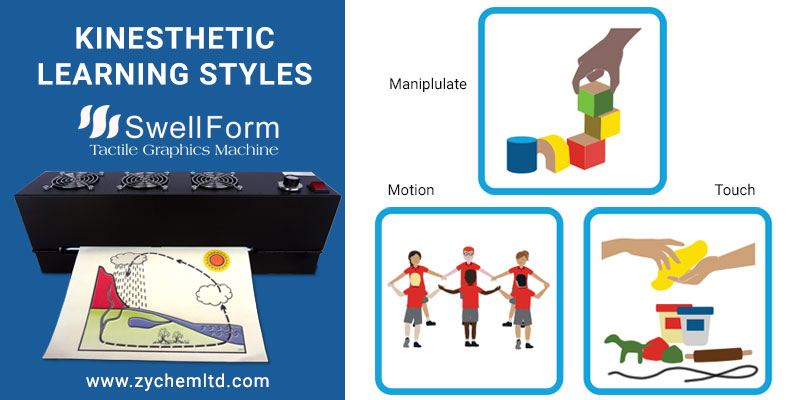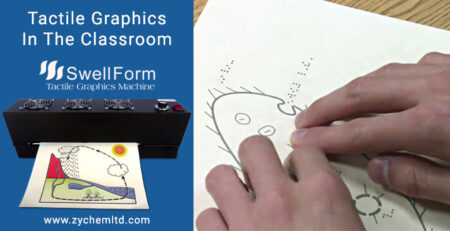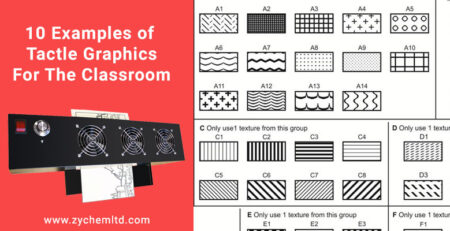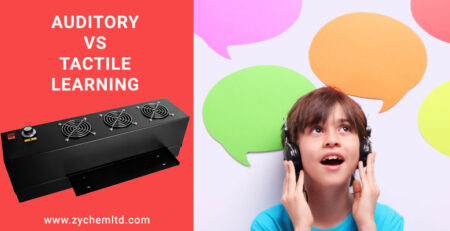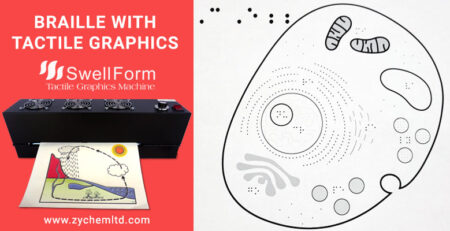Kinesthetic learning refers to a learning style that involves physical movement and engagement. It encompasses three elements: tactile, proprioceptive, and kinesthetic/movement.
Tactile learning, as a subset of kinesthetic learning, specifically focuses on the sense of touch and physical interaction with objects or materials. It emphasizes the use of hands and fingers to explore textures, shapes, and physical properties. Tactile learners benefit from direct contact and manipulation of objects to enhance their understanding and retention of information. The swell form machine is one method for quickly and easily creating these types of tactile graphics for the classroom.
On the other hand, proprioceptive learning relates to body awareness and spatial perception. It involves the sensation of movement, body position, and balance. Proprioceptive learners have a heightened awareness of their body and its movements, which aids in their comprehension and memory.
Kinesthetic/movement learning centers around physical movement and engagement. It encompasses activities such as walking, dancing, or engaging in physical exercises. Kinesthetic learners benefit from active participation and physical involvement to enhance their learning experience and recall information.
While all three elements of kinesthetic learning are closely interconnected, tactile learning specifically focuses on the sense of touch and physical interaction. Tactile learners find value in hands-on experiences, exploration of textures, and direct manipulation of objects.
People with visual impairments may benefit from tactile-only learning as it compensates for the lack of visual input. Tactile experiences provide direct access to information and enable individuals to explore the physical properties of objects and their spatial relationships. For visually impaired individuals, tactile learning becomes a crucial modality to gather information and understand the world around them.
On the other hand, individuals without visual impairments can benefit from a combination of motion and tactile learning. Engaging in physical movement and activities enhances their overall learning experience by activating multiple senses, improving focus, and deepening their understanding of concepts.
The modalities of kinesthetic learning differ in their emphasis on specific elements such as tactile, proprioceptive, and movement. Tactile learning is particularly important for individuals with visual impairments, allowing them to gather information through touch. In contrast, individuals without visual impairments may benefit from a combination of tactile and movement-based learning, engaging multiple senses to enhance their overall learning experience. Recognizing and catering to these different modalities can lead to more effective and inclusive educational approaches.
Additionally, the Tactile Library at https://tactilelibrary.com offers thousands of free, pre-made and downloadable tactile graphics with many of the concepts mentioned above so teachers can easily build a tactile lesson plan.

